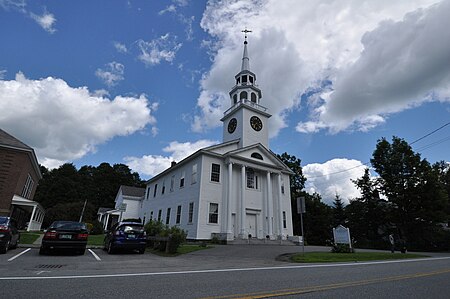Norwich Village Historic District
Colonial Revival architecture in VermontFederal architecture in VermontHistoric districts in Windsor County, VermontHistoric districts on the National Register of Historic Places in VermontNRHP infobox with nocat ... and 3 more
National Register of Historic Places in Windsor County, VermontNorwich, VermontUse mdy dates from August 2023

The Norwich Village Historic District encompasses the compact village center of Norwich, Vermont. The village was developed mainly in the first half of the 19th century, benefiting in importance from the 1820 founding of what is now Norwich University (since relocated to Northfield). The district has well-preserved examples of architecture ranging from the late 18th century to the early 20th century. It was listed on the National Register of Historic Places in 1991.
Excerpt from the Wikipedia article Norwich Village Historic District (License: CC BY-SA 3.0, Authors, Images).Norwich Village Historic District
Beaver Meadow Road,
Geographical coordinates (GPS) Address Nearby Places Show on map
Geographical coordinates (GPS)
| Latitude | Longitude |
|---|---|
| N 43.715555555556 ° | E -72.310555555556 ° |
Address
Beaver Meadow Road 32
05055
Vermont, United States
Open on Google Maps






